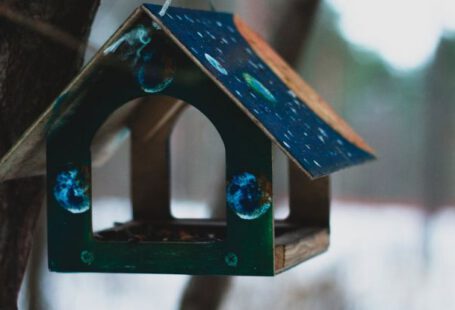Composting is a fantastic way to recycle organic waste and create nutrient-rich soil for your garden. It’s a sustainable practice that benefits both the environment and your plants. When it comes to composting, there are two main methods: hot composting and cold composting. While both techniques aim to break down organic matter, they differ in terms of speed, temperature, and maintenance. Let’s delve into the nuances of hot and cold composting to understand the key differences between the two.
**Hot Composting:**
Hot composting is a rapid process that involves actively managing the compost pile to accelerate decomposition. This method requires a careful balance of carbon-rich (browns) and nitrogen-rich (greens) materials, along with regular turning and monitoring of the pile’s temperature. The ideal temperature range for hot composting is between 135°F and 160°F (57°C and 71°C), which creates an environment that promotes the growth of thermophilic microorganisms. These heat-loving bacteria break down organic matter quickly, resulting in a fast decomposition process.
One of the primary benefits of hot composting is its efficiency in producing high-quality compost in a relatively short amount of time. With the right combination of ingredients and proper maintenance, you can have finished compost ready for your garden in as little as a few weeks to a few months. This method is ideal for gardeners who want a steady supply of compost for their plants and are willing to put in the effort to manage the compost pile actively.
**Cold Composting:**
Cold composting, on the other hand, is a slower and more passive method of composting. This technique involves simply layering organic materials and allowing them to decompose naturally over time. Unlike hot composting, cold composting does not require regular turning or monitoring of the pile’s temperature. Instead, the decomposition process is driven by mesophilic microorganisms, which operate at lower temperatures than their thermophilic counterparts.
While cold composting takes longer to produce finished compost compared to hot composting, it requires less maintenance and effort on the part of the gardener. This method is ideal for those who prefer a hands-off approach to composting and are willing to wait several months to a year for their compost to be ready. Cold composting is also a great option for composting larger quantities of organic waste, as it can accommodate materials that may take longer to break down.
**Choosing the Right Method for You:**
When deciding between hot and cold composting, it’s essential to consider your available time, resources, and preferences. Hot composting is best suited for gardeners who are looking for a quick turnaround and are willing to invest time and effort in managing the compost pile actively. On the other hand, cold composting is perfect for those who prefer a low-maintenance approach and are willing to wait for nature to take its course.
Ultimately, both hot and cold composting have their unique advantages and can be effective methods for recycling organic waste and enriching your soil. Whether you opt for the fast-paced nature of hot composting or the slow and steady progress of cold composting, the end result will be the same: nutrient-rich compost that will nourish your plants and help your garden thrive. So, choose the method that aligns with your gardening style and get started on your composting journey today.





